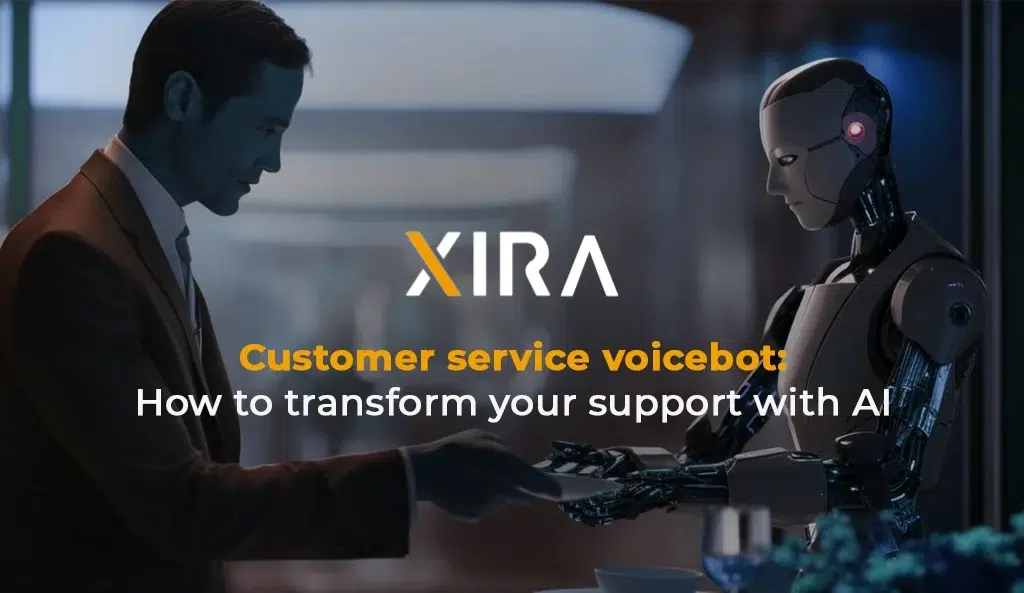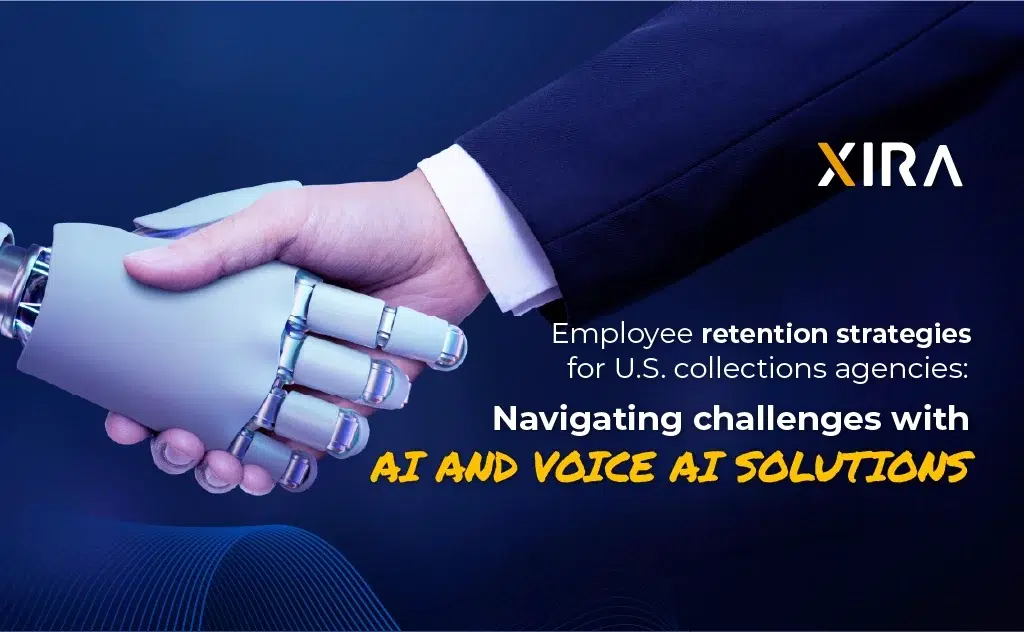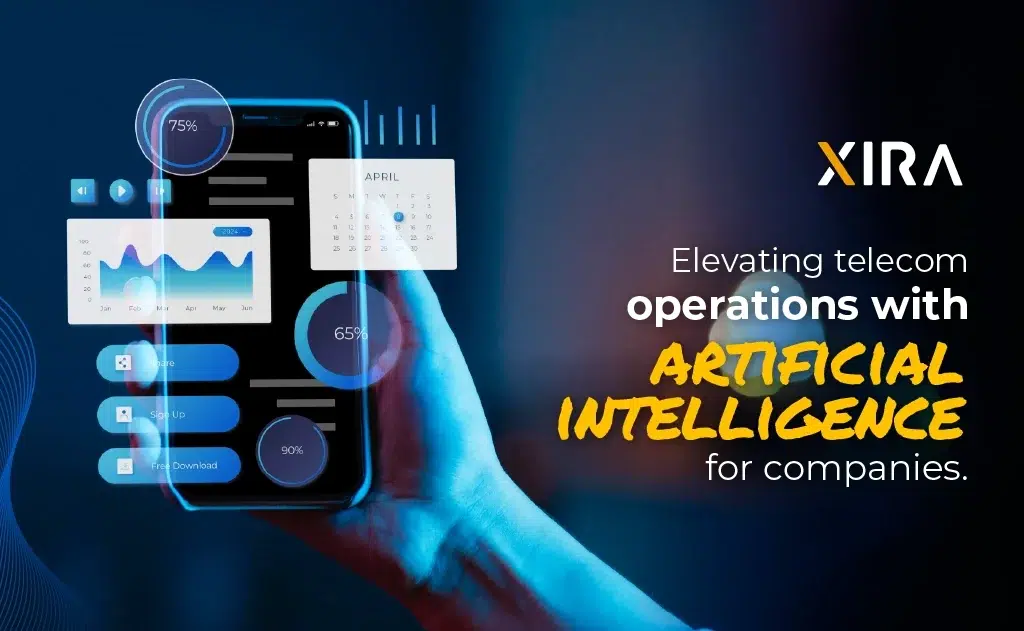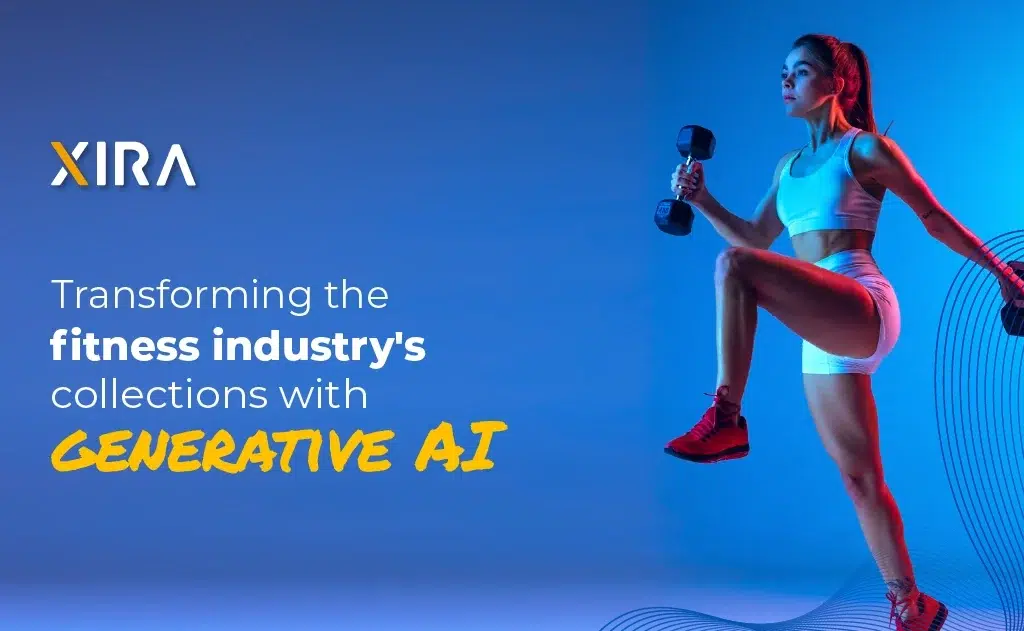Implementing a customer service voicebot is revolutionizing the way companies engage with users—combining technologies like AI for customer support, AI-powered chatbots, and voice assistants into a single platform.
These systems, powered by Natural Language Processing (NLP) and artificial intelligence, not only automate repetitive tasks but also deliver more human-like, personalized interactions. By integrating a voicebot, organizations can boost operational efficiency, cut costs, and improve customer satisfaction from the very first contact.
Current trends in customer service voicebots
The use of voicebots in customer support has grown rapidly, driven by the rise of generative AI technologies.
- Widespread adoption: By 2025, it’s expected that 80% of customer service operations will use generative AI, including voicebots, to enhance both agent productivity and customer experience.
- More human-like interactions: Thanks to advances in NLP, conversations with voicebots have become so natural that half of users can’t tell if they’re speaking to a human or AI.
- 24/7 availability: A customer service voicebot operates every day, all day—eliminating wait times and providing instant support without human intervention.
The evolution of voice systems in customer support
Voice systems have evolved far beyond traditional IVRs into smart solutions capable of understanding context and emotion.
- Conversational AI: 76% of businesses plan to implement voice-enabled AI systems by 2025, in a global conversational AI market projected to reach $29.8 billion.
- Reduced wait times: These platforms cut waiting times by 55% and increase first-contact resolution by 47%. They can also handle 63% of interactions without human assistance.
- Voice preference: 66% of users prefer resolving issues through voice systems instead of typing in a chat, with 73% valuing the personalized experience.
Security and voice biometrics advancements
Voice biometrics integration strengthens trust and security in customer service systems:
- Instant authentication: A customer’s voice acts as a unique fingerprint, reducing fraud and misidentification.
- Real-time data protection: Machine learning algorithms detect suspicious patterns instantly, enabling proactive threat response.
- Smooth experience: By removing tedious verification steps, voice biometrics enhance satisfaction and reduce average handling time (AHT).
Industry-Specific applications
Voicebots and voice-based support systems are adaptable across multiple industries:
- Healthcare: Schedule appointments, request prescriptions, and access treatment information without waiting.
- Banking & Finance: Secure authentication, balance inquiries, fraud alerts, and voice-activated payments.
- E-commerce: Track orders, process returns, and get product recommendations via natural conversations.
- Insurance: Automate key processes like FNOL (First Notice of Loss), policy management, and fraud detection using machine learning. Voicebots can handle up to 89% of incoming calls, provide 24/7 multilingual service, and improve customer satisfaction by up to 70%.

Benefits of implementing a customer service voicebot
Unlike traditional IVRs, voicebots offer powerful advantages:
- Smart call routing: Uses open-ended questions to understand the customer’s real need—no more rigid menus.
- Fewer transfers: Accurate classification reduces transfers between departments, saving time and cost.
- Best agent routing: Matches calls by product, language, or profile, supporting cross-sell and effective collections.
- Quality control: Sentiment analysis identifies caller mood and reason for contact, enabling post-call surveys.
- 100% call auditing: With speech-to-text, every call is auditable and generates automatic reports to prevent disputes.
- Scalable without spikes: Handles fluctuating call volumes without impacting response times, 24/7.
- Omnichannel deflection: During peak times, routes contacts to other channels while preserving full interaction history for agents.
- Faster resolutions: Equips agents with prior info (reason for call, identity), lowering AHT and boosting CX.
- Cost savings: Automates repetitive, low-value tasks through a scalable cloud-based solution.
How to integrate your voice assistant and AI chatbots
To get the most out of your voicebot:
- Set clear goals: Define success metrics (CSAT, AHT, FCR) before implementation.
- Train your model: Use real call recordings and FAQs to feed your NLP engine.
- Iterative testing: Launch pilots and refine dialogues based on feedback from users and agents.
- Connect your systems: Integrate with CRM, ERP, and chat platforms for a true omnichannel experience.
- Monitor results: Analyze interaction reports and adjust workflows for continuous improvement.
A well-implemented customer service voicebot—powered by AI for customer support, AI chatbots, and voice assistant technology—does more than automate processes; it transforms your entire service strategy.
From reducing costs and wait times to enhancing security through voice biometrics, these solutions redefine user experience and elevate operational performance. Adopting this technology is a smart step toward faster, more personalized, and cost-effective support.
Ready to bring these benefits to your company? Reach out to Xira—we’ll help you find the ideal AI voicebot solution to optimize your service, enhance the customer experience, and reduce operational costs.





